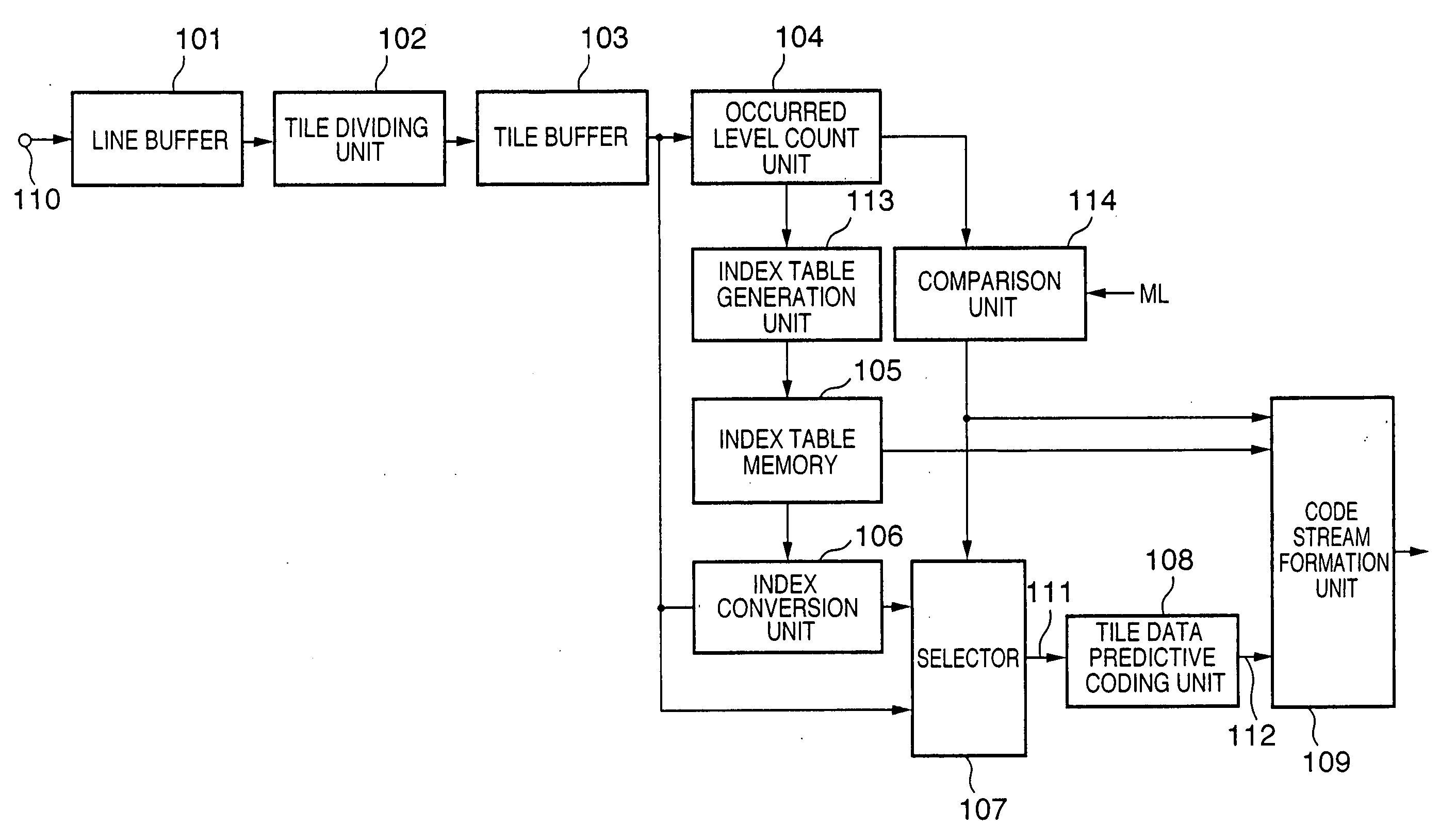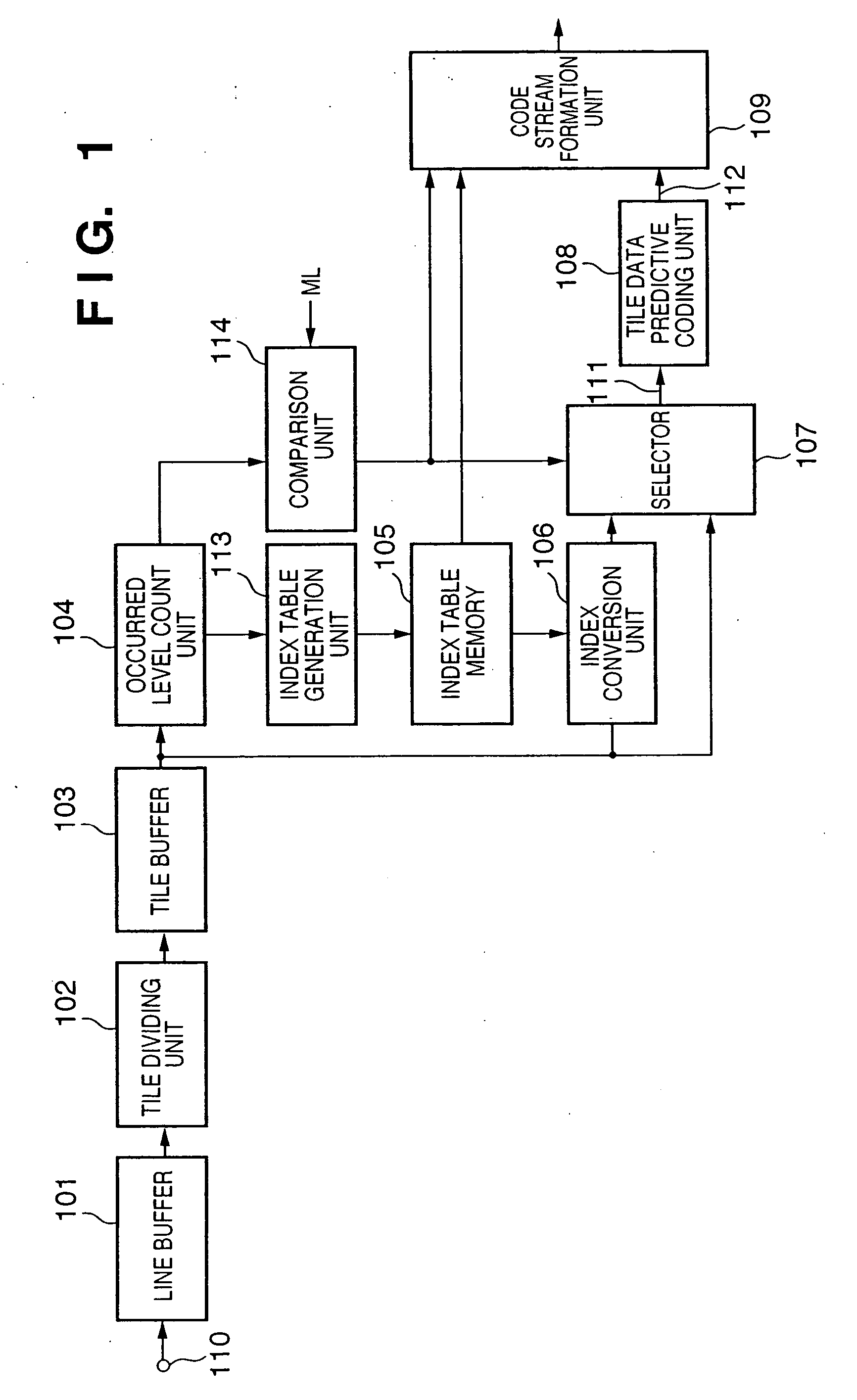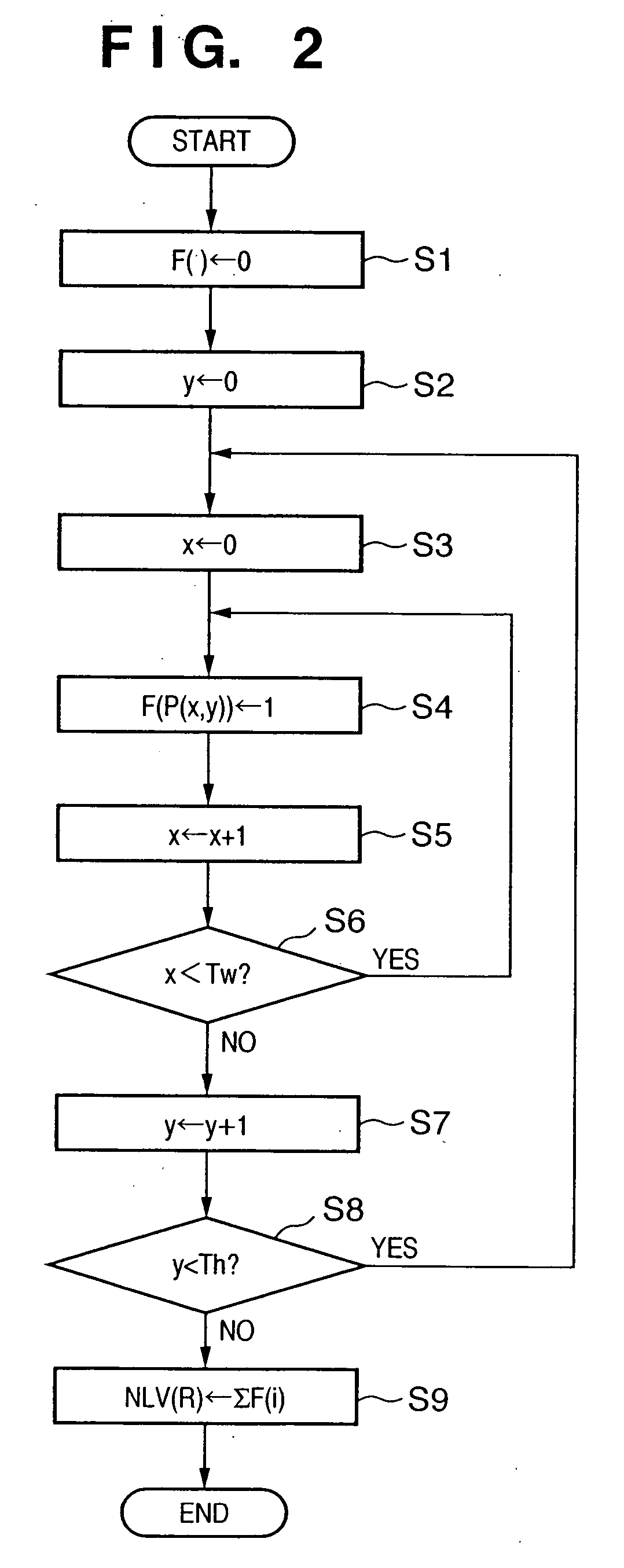Image coding apparatus and image decoding apparatus and their control methods, and computer program and computer-readable storage medium
a technology of image data and coding apparatus, applied in the field of image data coding and decoding technique, can solve the problems of code amount, memory capacity increase, and the above method is not frequently used, and achieve the effect of easy and efficient encoding of image data
- Summary
- Abstract
- Description
- Claims
- Application Information
AI Technical Summary
Benefits of technology
Problems solved by technology
Method used
Image
Examples
first embodiment
[0042]FIG. 1 is a block diagram showing the construction of an image processing apparatus (image coding apparatus) according to a first embodiment of the present invention.
[0043] In FIG. 1, reference numeral 110 denotes an input terminal to input image data. In the present embodiment, pixel data having respectively 8-bit (256 gray levels) R, G and B component brightness values is inputted by 1 line. The input image data is not limited to RGB color space data but data in other color space such as YMC, Lab or YCbCr may be inputted. Since it is well known for the persons skilled in the art that in the case of YMC space, each pixel is represented by YMC density values, those skilled art will easily understand the input data is not limited to the brightness values.
[0044] Numeral 101 denotes a line buffer which holds plural line color images. In the present embodiment, the number of lines stored in the line buffer 101 is Th. As 1 pixel corresponds to RGB three components and each compon...
second embodiment
[0154] In the first embodiment and the modification, the degree of discrete distribution (sparseness) of respective color-component brightness values occurred in 1 tile is represented by the respective color-component number of occurred levels NLV(R), NLV(G) and NLV(B). That is, when the number of brightness types occurred in a limited brightness range (0 to 255 as 8-bit data) is small, there is a high probability that the brightness distribution is discrete to the brightness axis, in other words, sparse. However, the relation “number of occurred levels is small=degree of discrete distribution is high” does not necessarily hold.
[0155]FIGS. 16A and 16B are histograms showing brightness on the horizontal axis and occurrence frequency on the vertical axis in a case where the number of occurred levels NLV( )=8 holds. FIG. 16A shows an example where the occurred brightness values are appropriately discrete, and FIG. 16B, an example where the occurred brightness values are clustered to t...
third embodiment
[0168] In the first embodiment, the modification and the second embodiment, all the tiles are subjected to lossless coding. However, the present invention is not limited to this coding but applicable to a combination of lossless coding and lossy coding for the sake of improvement of compressibility. As a third embodiment, an example of image processing apparatus which encodes tile data by lossless and lossy coding methods, and selects one of the coded results with smaller code amount, as tile coded data, will be described. In a case where a code amount, as a result of best possible high-quality coding using lossy coding mainly for natural image such as JPEG method recommended as an international standard coding method, is compared with a code amount as a result of lossless coding based on predictive coding, the code amount by the lossless coding is smaller in the case of artificially generated character / line art image and CG image, while the code amount by the lossy coding is smalle...
PUM
 Login to View More
Login to View More Abstract
Description
Claims
Application Information
 Login to View More
Login to View More - R&D
- Intellectual Property
- Life Sciences
- Materials
- Tech Scout
- Unparalleled Data Quality
- Higher Quality Content
- 60% Fewer Hallucinations
Browse by: Latest US Patents, China's latest patents, Technical Efficacy Thesaurus, Application Domain, Technology Topic, Popular Technical Reports.
© 2025 PatSnap. All rights reserved.Legal|Privacy policy|Modern Slavery Act Transparency Statement|Sitemap|About US| Contact US: help@patsnap.com



